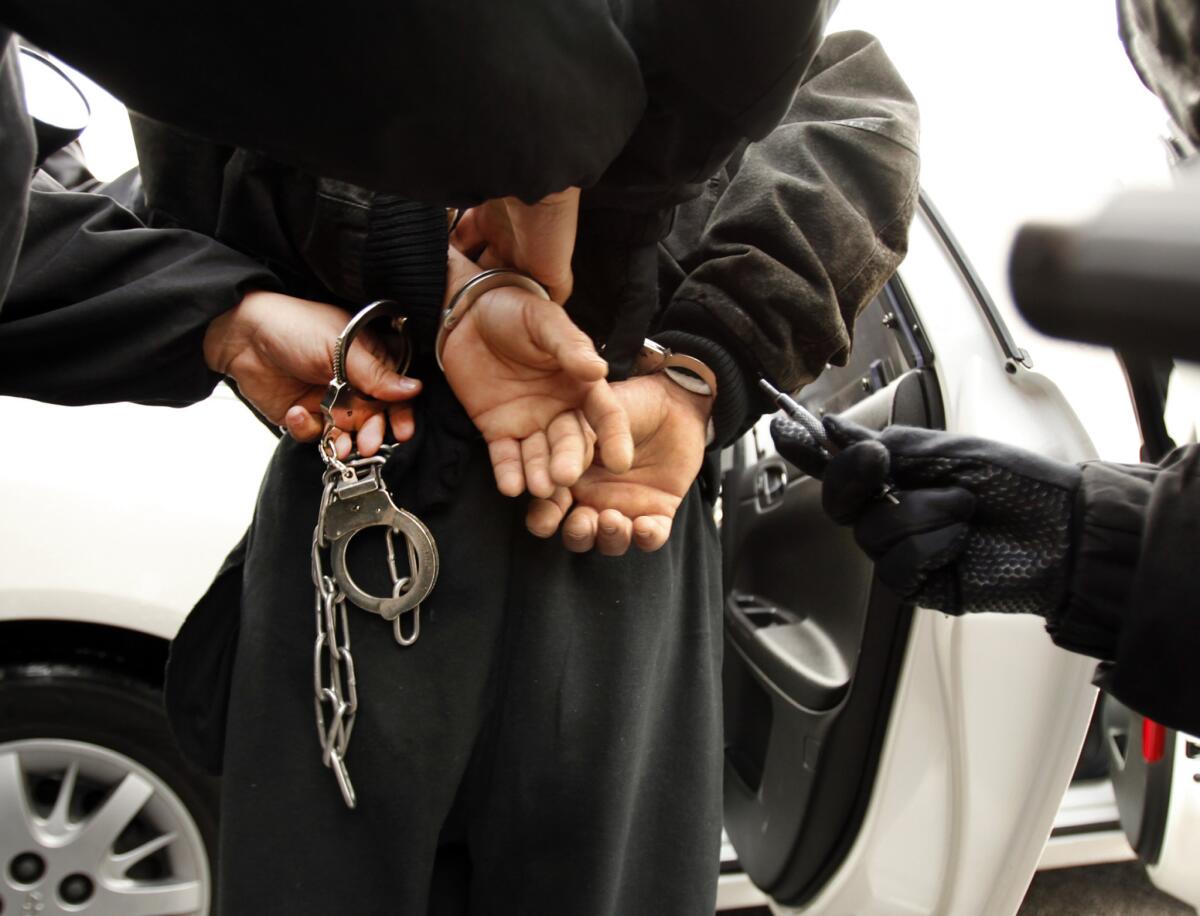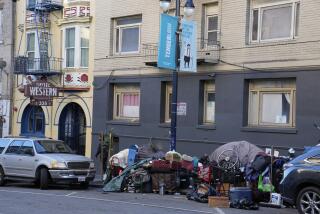Shackling to end at San Francisco immigration court

Immigrants fighting deportation in San Francisco will no longer be shackled during most court hearings, according to a settlement reached with U.S. Immigration and Customs Enforcement.
The settlement, which received preliminary approval from a federal judge Thursday, is limited to San Francisco Immigration Court but could affect how immigrants are treated in other jurisdictions.
People held at detention centers in the San Francisco area are transported to court shackled at the wrists, waist and ankles, attorneys for four immigrants wrote in a federal lawsuit filed in 2011. The shackles are kept on during court hearings, which is humiliating to immigrants and may predispose judges to view them as criminals, the attorneys wrote.
While some immigration detainees have been convicted of criminal offenses, others are locked up because they cannot afford a bond as they contest their deportations.
“Often, the difference between showing up to a hearing in a suit like I’m wearing vs. a jumpsuit is the ability to pay $5,000 bond,” said Paul Chavez, senior attorney at Lawyers’ Committee for Civil Rights of the San Francisco Bay Area, which litigated the class action case along with the American Civil Liberties Union of Northern California and attorneys from Wilson Sonsini Goodrich & Rosati.
The shackling is a blanket policy in San Francisco and may not be as widespread in other areas. Plaintiffs’ attorneys said they hope the settlement creates a precedent to reduce the shackling of immigration detainees throughout the country.
“Although this settlement applies only to San Francisco, we fully expect that this will be a model for future litigation throughout the country and reformation practices in other jurisdictions around the nation,” said Catherine Moreno, a partner at Wilson Sonsini.
In Southern California, immigrants from Orange County detention facilities are usually shackled during hearings in downtown Los Angeles, said Michael Kaufman, a staff attorney with the ACLU of Southern California.
“It’s not only inhumane and uncomfortable, but it gives off the wrong image,” Kaufman said. “The judge is looking at somebody in a jumpsuit and handcuffs, as if they present some kind of risk and safety threat, which is not the case.”
ICE has not indicated whether it will change its detention practices outside of San Francisco.
“ICE is committed to preserving the dignity and welfare of all those in our custody” and “is also obligated to ensure the safety of the public and employees visiting or working in federal buildings that house court proceedings,” the agency said in a written statement. “ICE has worked with the plaintiffs to arrive at an agreement which affords the agency the flexibility to do both.”
Under the settlement, detainees will not be shackled at San Francisco immigration court hearings unless they are an escape risk or become violent.
An exception is initial scheduling hearings, where 20 or 30 detainees appear at once. Shackles can still be used at those hearings, called master calendar hearings, but detainees can seek an exception for medical reasons. The practice of “daisy chaining,” or chaining many detainees to one another, will be prohibited.
The settlement also provides for private consultation rooms for detainees to meet with their attorneys on master calendar days.
The plaintiffs are from Brazil, Guatemala, Mexico and China. Several have medical conditions that make wearing shackles especially painful. According to a court filing, all said the shackles made them feel ashamed when facing a judge.
Esmar Cifuentes, the Guatemalan detainee, worried that when “my family comes to see me … my children might think I did something evil like kill somebody.”
Twitter: @cindychangLA
More to Read
Start your day right
Sign up for Essential California for news, features and recommendations from the L.A. Times and beyond in your inbox six days a week.
You may occasionally receive promotional content from the Los Angeles Times.







